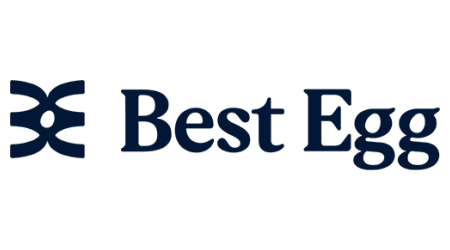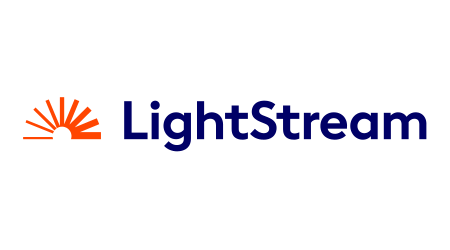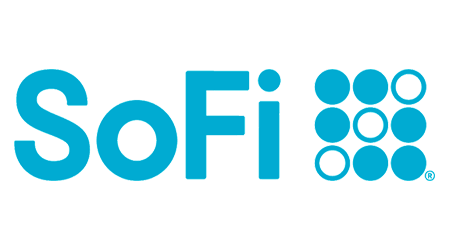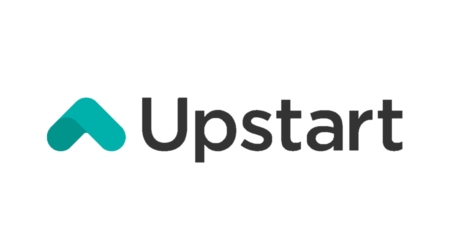Use our table to compare lenders that offer $35,000 loans. Select your state, credit score range, amount and purpose to compare options available to you. Check Compare for up to four providers for a side-by-side comparison and hit Go to site to check your rate.
Compare other products
We currently don't have that product, but here are others to consider:
How we picked theseWhat is the Finder Score?
The Finder Score crunches 6+ types of personal loans across 50+ lenders. It takes into account the product's interest rate, fees and features, as well as the type of loan eg investor, variable, fixed rate - this gives you a simple score out of 10.
How to get a $35,000 loan
Ready to apply for a $35,000 loan? Follow these five steps:
- Calculate what you can afford. Find out what rates and terms give you monthly payments within your budget using the above calculator and let the data guide your search for a loan.
- Research your options. Before doing a hard comparison, look for lenders that offer this amount. Do you have $35,000 in debt? You might want to look at lenders that specialize in debt consolidation. Not sure you’ll get a great deal on your own? Consider lenders that accept cosigners or allow you to back your loan with collateral.
- Compare lenders. In addition to comparing rates and terms on your $35,000 loan, look at other features that might be important to you, like speed and prepayment options, to narrow down your list of potential lenders. Also, make sure you meet the eligibility criteria — some have a minimum credit score or income requirements. And some might not be available in your state.
- Prequalify. Most lenders allow you to check what rate you might qualify for by filling out a quick online form based on a soft credit pull. This can help you make a more accurate cost comparison to find a good deal. If you find a lender you’re interested in on one of our tables, you can get started by clicking the “Go to site” button. Just remember you might not get the rates you prequalified for when you complete the full application.
- Apply. If you like one of the loans you’ve been preapproved for, follow the lender’s instructions to submit documents and complete the application. You can typically get your decision as soon as the next business day if you apply online.
Step-by-step instructions to apply for a personal loan
How to qualify for a $35,000 loan
Typically, you need to meet the following requirements to qualify for a $35,000 loan:
- Have good to excellent credit. You typically need to have a credit score of 670 minimum to qualify for a loan of this amount.
- Have a low DTI ratio. Your debt-to-income (DTI) ratio shows how much money you have available each month after paying your bills. While most lenders won’t work with you if you have a DTI over 43%, you’ll likely need a DTI closer to 20% to get a $35,000 loan. Learn your DTI using our calculator.
- Be employed. While there are loans for people who receive funds from other types of income, you’ll typically need a full-time job to get this amount — and it might be hard to qualify if you work for yourself.
- Be a US citizen or permanent resident. While there are options for nonresidents, lenders like Stilt tend to have maximums lower than $35,000. You might have to find a qualified cosigner to get a loan of this amount.
- Be the age of majority. In most states, you must be 18 or older to take out a loan. You must be 19 in Nebraska and Alabama, and 21 in Mississippi.
How to increase your chances of approval
Improving your credit score and making sure you have enough available income are two of the better ways to increase your approval odds.
Knowing your credit score and debt-to-income ratio can also help you narrow down the lenders you want to apply with, saving you time and energy.
Can I get a loan for $35,000 with bad credit?
To qualify for a $35,000 loan, you typically need to have good to excellent credit.
Before you apply, check your credit score. If it’s lower than expected, there are steps you can take to correct any errors on your report and potentially bolster your score. Or, consider signing up for credit repair.
Because a $35,000 loan is on the higher end of what most lenders offer, you generally need stellar credit and a low debt-to-income (DTI) ratio to qualify for an unsecured loan on your own. If you’re not sure you’re eligible, you might want to consider a secured loan or apply for a personal loan with a cosigner.
How much does a $35,000 loan cost?
Personal loans of $35,000 typically come with lower rates than smaller loan amounts — which usually ranges from 6% and 36%. You may also need to pay an origination fee, which can sometimes run as high as 10%. Lenders either deduct the origination fee from your loan amount or add it to the loan balance you owe at closing. If you apply for a loan with an origination fee, ask your lender how it applies that fee. Otherwise, you might not receive the full $35,000 you applied for.
Your loan term also affects the total and monthly cost of your loan. Personal loan terms typically range from three to seven years, with long terms giving you a lower monthly cost but higher total cost than short terms.
Your bank account may take a more noticeable hit from a loan with a short term, but a longer term may not offer as many monthly savings as you expect. That’s because many lenders charge higher APRs for the longer the loan term. To lower the total cost of the loan, consider going for the shortest term you can afford.
Calculate your monthly payment on a $35,000 loan
Use our loan repayment calculator to see how much a $35,000 loan may cost you based on its loan term and interest rate.
$35,000 loan repayment calculator
See how much you'll pay|
Your loan
|
|---|
| Loan amount |
|
$
|
| Loan terms (in years) |
|
|
| Interest rate |
|
%
|
Fill out the form and click on “Calculate” to see your estimated monthly payment.
or
Compare personal loans nowBased on your loan terms
| Principal | $ |
|---|---|
| Interest | $ |
| Total Cost | $ |
How to get a low rate on a loan
A good credit score is key to getting a low rate on a personal loan. Not only can your creditworthiness make or break your approval odds overall, but it’s also the key factor in what interest rates you can qualify for.
Here are some ways to boost your chances of nailing down a low rate:
- Raise your credit score. Sounds daunting, but there are many different ways to go about credit repair or credit building.
- Find a cosigner. If you apply with a lender that allows a cosigner, having one on the loan application adds more security for the lender and could help you qualify for a lower rate than applying by yourself. Find yourself a cosigner with a high credit score for better odds of qualifying for a low rate.
- Consider a short loan term. Shorter loans tend to come with lower interest rates, so if you can afford a shorter loan, it can mean fewer interest charges and a lower rate.
- Rate shop. This tactic involves applying for the same type of credit within 14 days. By applying for a personal loan with multiple lenders within two weeks, only one hard inquiry impacts your credit score, letting you compare many options without severely damaging your credit.
How to pay off $35,000 in debt
A $35,000 loan sounds like a big mountain to climb — and you’re not wrong. For loans of this size, it’s often a multi-year loan which feels like a huge commitment. On top of that, over time you may find yourself in a different financial situation toward the end of the loan.
If you’re worried about repaying the loan, know that there are multiple repayment tactics to consider:
- Refinancing. If you need the loan now but you can’t get the low interest rate you want, then refinancing later on could be the answer. Refinancing involves paying off the original loan and replacing it with a new loan, and most people do this to get more favorable terms, such as a lower interest rate and lower payment.
- Debt consolidation. While most popular with credit cards, debt consolidation is when you combine multiple accounts into one. It can be a convenient debt relief strategy because you have fewer monthly payments to worry about, and if you can manage it, the large consolidation loan could have a lower interest rate, saving you money over time.
- Paying off the loan early. There are many ways to pay off your loan early. You could make one extra payment each year or even round up your monthly payment each month. The faster you pay off a personal loan, the more you can save on interest charges.
- Payment splitting to reduce interest. This tactic involves paying half of the payment 15 days before the due date, then paying the remaining half on the due date — this reduces interest charges without shelling out extra cash.
Alternatives to personal loans
Personal loans are great for consolidating debt or investing in home improvements. But you may want to also consider a home equity line of credit or if you own a home and are looking for lower rates. Personal lines of credit may also be a better option for financing ongoing projects — or to have on hand as an alternative to a credit card. For more information on these loans and four more options, see our full guide on personal loan alternatives.
Ask a question
More guides on Finder
-
Holiday Borrowing: What $1,000 Really Costs Across 5 Ways to Get Cash
The best way to finance the holidays might not be your credit card.
-
Simple Path Financial Review: Low APR, Flexible Requirements (2026)
Flexible loans no matter your financial history, but make sure you understand the terms.
-
10 Emergency Loans for Good and Bad Credit
Emergency payday loans can give you quick and easy access to funds. Compare your options and find a lender to help see you through.
-
LendingPoint Personal Loans Review: Potentially High Rates
Fast funding for fair credit borrowers who need small loans.
-
Wells Fargo personal loans review
A Wells Fargo personal loan could provide you with the financing you need to make the next big step in your life. Learn more about the rates and terms.
-
OneMain Financial: No Credit Score Needed But Higher Costs
Explore OneMain Financial’s personal loans with low requirements, quick approvals and options for all credit types.
-
Happy Money: Consolidate High Interest Credit Card Debt
Looking to tackle credit card debt? Find out if Happy Money’s loan options fit your needs.
-
SoFi Personal Loans Review: For Good Credit Borrowers
SoFi offers personal loans at competitive rates with extra perks for borrowers. Learn what you need to qualify and how to apply with this top online lender.
-
Best Egg Personal Loans Review: Fast Funding & Good Rates
Best Egg offers personal loans up to $50,000; see how they compare to other lenders.
-
LightStream Review: Big Loans & Good Rates for Good Credit
Financing up to $100,000 — but only for borrowers with good credit.




